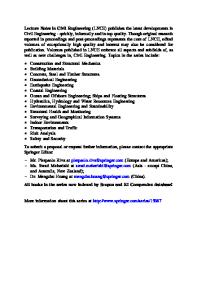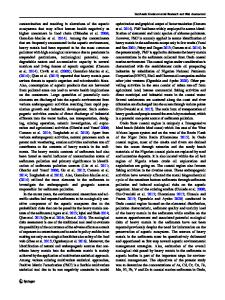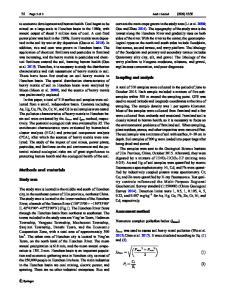Hazard, ecological, and human health risk assessment of heavy metals in street dust in Dezful, Iran
- PDF / 2,613,786 Bytes
- 14 Pages / 595.276 x 790.866 pts Page_size
- 14 Downloads / 412 Views
ORIGINAL PAPER
Hazard, ecological, and human health risk assessment of heavy metals in street dust in Dezful, Iran Fatemeh Sadeghdoust 1,2 & Navid Ghanavati 2 & Ahad Nazarpour 3 & Timoor Babaenejad 2 & Michael James Watts 4 Received: 30 April 2019 / Accepted: 20 August 2020 # Saudi Society for Geosciences 2020
Abstract This study aimed to investigate the potentially toxic metal (Pb, Zn, Cu, Cr, Cd, Ni, V, As, and Co) hazard in street dust from Dezful, Iran. For this purpose, we collected 30 samples of street dust from the main pedestrian sidewalks of Dezful. Subsequent heavy metal concentration data for these samples was evaluated using human health risk and potential ecological risk index (RI) assessments. The average toxic metal concentrations for Pb, Zn, Cu, Cr, Cd, Ni, V, As, and Co were 54, 224, 51, 44, 0.4, 46, 38, 3, and 8 mg/kg, respectively. Except for As, V, and Co, the mean concentration value of all heavy metals was several times higher than that of baseline concentrations. Calculations for potential ecological risk (PER) suggested a low street dust ecological risk from Pb, Zn, Cu, Cr, Ni, and V, while Cd presented a moderate ecological risk level. The highest hazard quotient (HQ) in children and adults was related to Pb by ingestion, while the lowest value was for Cd via inhalation. For all heavy metals, the hazard index (HI) was higher for children than for adults, which confirmed that the risk of exposure to these potentially harmful heavy metals is higher for children. The cancer risk (CR) values for Ni, As, Cd, and Pb for children and adults were lower than the threshold, 10−6, suggesting that the cancer risk for the majority of heavy metals measured was negligible, but more significant than the threshold for Cr, indicating that the presence of Cr in street dust requires urgent attention. Keywords Heavy metal pollution . Hazard index . Street dust . Spatial distribution . Dezful
Introduction Dust is one of the main causes of human exposure to potentially harmful metals in the urban environment (Lu et al. 2014b; Rout et al. 2013; Ghanavati and Nazarpour 2018). Natural factors contributing to more elevated concentrations of metals in dust include parent material and processes of soil formation, coupled with anthropogenic factors, including Responsible Editor: Amjad Kallel * Navid Ghanavati [email protected] 1
Department of Soil Science, Khuzestan Science and Research Branch, Islamic Azad University, Ahvaz, Iran
2
Department of Soil Science, Ahvaz Branch, Islamic Azad University, Ahvaz, Iran
3
Department of Geology, Ahvaz Branch, Islamic Azad University, Ahvaz, Iran
4
Inorganic Geochemistry, Centre for Environmental Geochemistry, British Geological Survey, Nottingham, UK
industrial activities, traffic, fuel combustion, waste disposal, and constructions (Holnicki et al. 2017; Lu et al. 2014a). Potentially toxic metals can affect human health through exposure pathways including direct human contact, transfer to plants and animals, thus entering the human food chain, contamination
Data Loading...











